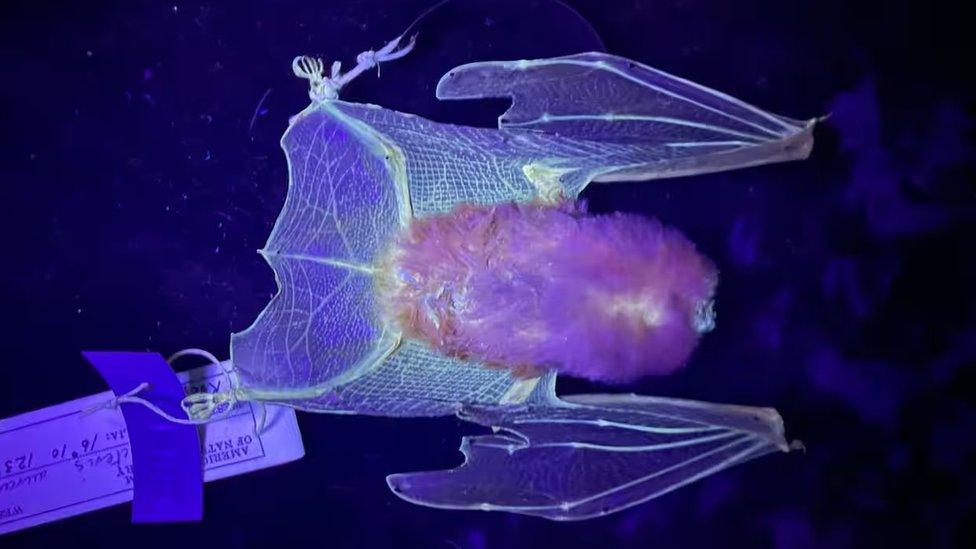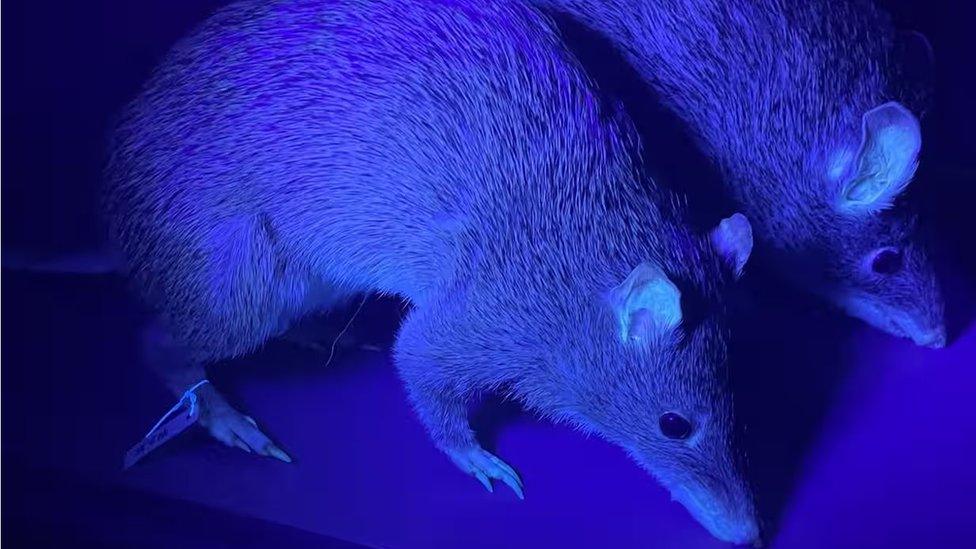Why do cats, bats and wombats glow under UV light?
- Published
- comments

A new study has shown that move than 100 species of mammal glow under ultra-violet (UV) light.
Researchers from the Western Australian Museum and Curtin University decided to study 125 mammals - which had been preserved or frozen in a museum collection - to find out if the animal's fur or skin reacted or glowed in any way when they shined a UV light on it.
Many animals, such as birds, reptiles, insects and fish glow in this way, however very little was known about mammals.
The researchers were pretty excited to discover that all but one of the animals had an outwardly visible fluorescent glow under the UV light.
What did they find?

"We were quite curious to find out about fluorescence in mammals," said Dr Kenny Travouillon, who works at the Western Australian Museum and was the lead author of the study.
The team used a special device called a spectrophotometer to help them to measure the light that was given off by each mammal when they shone UV light at them.
Some of the animals they looked at included cats, polar bears, bats, mountain zebra, wombats, dwarf spinner dolphins, leopards and Tasmanian devils.
The team found fluorescence in the animal's bones, teeth, claws, fur, feathers and skin, which glowed red, yellow, green, pink and blue under the UV light.
Fluorescence is a type of glowing the happens when special chemicals on a plant or animal absorb radiation - like ultraviolet light, that we usually can't see - and give off light that we can see.
The animals that glowed the most, were those with white or lighter coloured fur, which made up around 86% of the animals studied.
Fluorescence was not as bright in animals that had darker fur, such as the tasmanian devil.
Only one mammal, the dwarf spinner dolphin, did not glow on the outside. Only it's teeth glowed under the UV light.
They also discovered that nocturnal animals - creatures that sleep during the day and are awake at night - and forest animals had the most fluorescence.
This could be a way of communicating or signalling to other animals in low-light conditions, but scientists don't know for certain yet.
"While fluorescence is more common in certain types of mammals, such as our nocturnal marsupials, it doesn't mean that it has a function, as there is very little UV light reflected from the moon at night. said Dr Kenny Travouillon.

"A lot of people might want to get a UV light and try it on their pets," said Dr Kenny Travouillon.
"Just one word of caution - they shouldn't put the UV light in the eyes of their pets, because that does damage the eyes."
- Published30 April 2020

- Published3 July 2012
